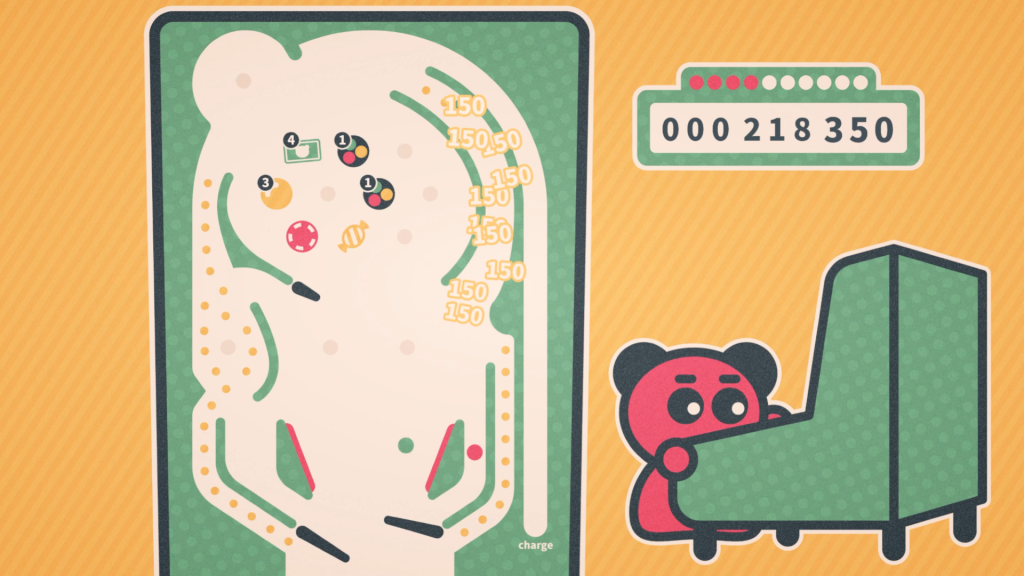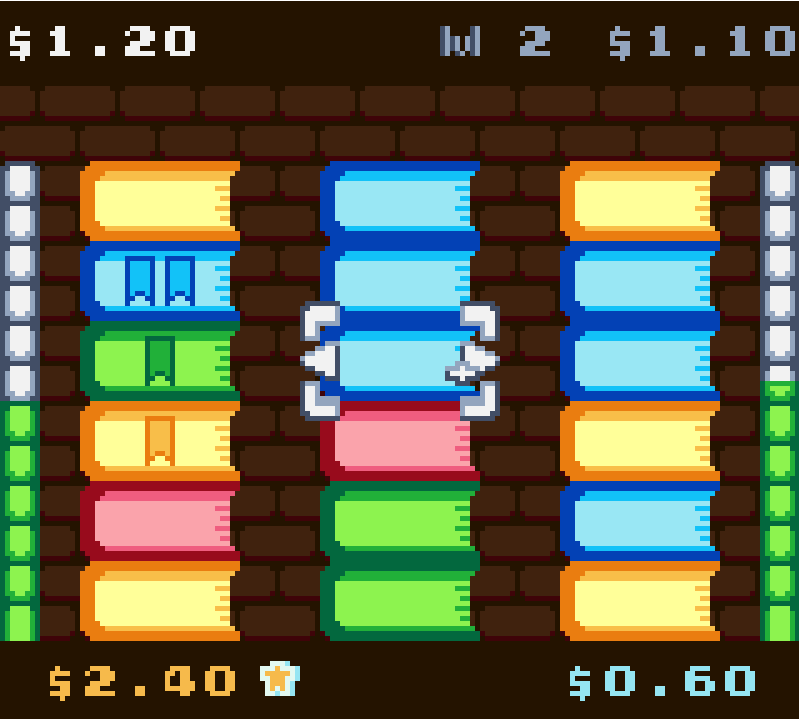I’m a bit behind on these just because I’ve been so busy lately but I’ve wanted to get one out there since there’s a few time limited things in here. Even the rushed ones like these take a bit of time to write so I always appreciate when people share these or make their own blog posts about indie games they enjoy so people can discover new games. I also always love comments on what folks have been playing.
The Games
The big one this week is the California Fire Relief Bundle (Itch.io), where you can pay $10 or more and get a lot of great games like Tunic, Neon Struct, Skatebird, and more. My recommendation with this is to always dig a bit and try something you normally wouldn’t have. If you haven’t played a solo tabletop rpg before, look for one of those. Never played a ZX Spectrum game (I’m American so read this as someone saying “Zee Ex” and then backing up and saying “Zed Ex”) before? Download an emulator and play Last Train To Tranz-Central.
Type Help (Itch.io) is a brilliant Obra-Dinn/Roottrees are Missing-like that is free and playable in the browser. Don’t really want to give too much away but it’s very impressive that this was all done in Twine and critically acclaimed interactive fiction author Andrew Plotkin has also discussed why it’s brilliant on his blog.
Root Bear (bluesky link) got an update on the Playdate. My kids love this game so I feel like I should recommend it.
A new bundle called the Indie Allies 2025 has launched on Humble and described as “Play great titles that help support BIPOC game developers & studios with our Indie Allies 2025 Bundle.” I know Humble has been up to bullshit lately but you can alter the cut they take to almost nothing and get some cool games from it, which money going to a non-profit too. I’m also just a big fan of Super Space Club, Aerial_Knight’s Never Yield, and On the Peril of Parrots and think more people should play all 3 games. I’m sure the other games in the bundle are good too.

pinboll (Itch.io) is a cute pinball game available as pay-what-you-want where the table gradually has more elements added to it as you play more balls. I also think it’s very fun to have a global leaderboard for a little game like this. I found this one through the review on Indie Games+. Support your local indie game review outlets that are covering small stuff like this.
Basilica (Itch.io) is just a nice little free builder toy where you create courtyards and towers. Go check out the rest of their builder games on their itch page, those are lovely too.

I love the classic DOS game Skyroads so yeah, I’ll take a spiritual sequel to that. Skylanes (Itch.io) is one of those available as pay-what-you-want and I think they did a good job.
Play with Your Own Junk (dev site) is a free collection of games you can play at home using household materials.
A new issue of the free interactive fiction magazine ChoiceBeat (Itch.io) is out! Am I just mentioning this because this site got a mention? No! Am I above getting influenced through flattery? Also no! But I’ve been a fan of the zine for a while and will continue to recommend them because it’s free and it’s always nice seeing people talk about interactive fiction.

The Museum of All Things (Itch.io) is a free virtual museum inspired by 90s educational shows and games where it generates museum exhibits on the fly by downloading material from Wikipedia. I absolutely loved this one! It’s just so much fun to walk around, checking out new exhibits that are connected to the one you are in, and falling down wikipedia rabbit holes but in the form of a 3D space.
Painting Tomorrow (Itch.io) is a free browser game created for the Trans Joy 2025 jam where you use a pinball table to paint every surface.
And maybe consider checking out everything else in the Trans Joy jam.

The CSS Puzzle Box (dev site) really is what it says on the tin. It’s a free browser game where you open up a puzzle box but it’s all done through CSS. Sometimes you just want to do some fun puzzles for free and marvel at the tech behind it.
The Rest of the Games
Ok, so like I said at the top, I’ve been busy and haven’t been able to play much lately. So here’s a huge list of games I haven’t played but I’ve seen people sharing and recommending so I’m going to post them, because if I don’t then I’ll probably never get around to it. Apologies for this being rushed, these games all look interesting and deserve longer writeups on other blogs so maybe you’ll check some of them out?
OMEGA 6 The Triangle Stars (Steam) is a visual novel/rpg/adventure game by Nintendo art director turned manga artist, Takaya Imamura, and developers of the Retro Mystery Club series, Happymeal.
Bee-Fore the Storm (Itch.io) is described as “a retro mashup featuring shmup, platformer, arcade shooter, and light simulation genres, all wrapped up for the Game Boy!” It really is a Game Boy game, in addition to being playtable on other platforms too. There’s also adult material in here, which you don’t see too often in a Game Boy game. I really like the dev’s previous game LesbiAnts.
Desecrators (Steam) looks like a ding dang Descent-like and the Steam reviews are positive so sure, I’ll take another one of those..
Cyrano (Steam) has you write love letters and cross swords in a one hour adaptation of the classic play: Cyrano de Bergerac. That doesn’t come up in games very often and I like the developer a lot.
The Local (Steam) is a free multiplayer FPS inspired by Jet Set Radio, I think? I really like the art.
Au Revoir (Steam) is a cyberpunk point-and-click adventure described by the HauntedPS1 curator page as “Blade Runner Point and Click with a Haunted PS1 coat of paint. The puzzles ask you to really pay attention to the environment around you, but luckily that environment is a treat to take in.” I haven’t seen it pop up in the adventure game community so maybe folks over there would be interested in it.
Microtopia (Steam) is a strategy game that looks like one of those supply chain building things, but this one has you controlling ants on a circuit board and I think that’s a really cool look.
Back Alley Games #012 (Itch.io) is a video game zine by the Chicago non-profit Indie City Games.
The Castle of Count 100 (Itch.io) is a free browser boss rush game made in ZZT.
I…uhhh….don’t really know what Juice Galaxy is (Steam/Itch.io) but it looks interesting.
Ten Things I Learned In The Red Room (Itch.io) is a free Twine game by the great IF writer Nessa Cannon and made as a tribute to David Lynch.

I haven’t played the free walking simulator Light Engine (Itch.io), but look at that art!
HALL of the DWARF KING (Itch.io) is a dungeon crawler for the Playdate along with two other dungeon crawler jam games. If you don’t have a Playdate it includes a PDF that you can print and cut up for an IRL game board and cards used to set your encounter order for 1-3 players.
Apache Canyon (GitHub) is a new game released for the Acorn Electron & BBC Micro and free to download.
Bloodlust: Santa Monica (Itch.io) is a free adventure game demake of Vampire The Masquerade: Bloodlines. This was actually released a while ago but keeps getting updates and it’s new to me so maybe it’s new to you as well.
Metamorph (Steam) is a horror adventure game described by the HauntedPS1 curator as “Fantastic short Kafka inspired game with HPS1 vibes. Discover the ordeal of being known and, if you’re lucky, the rewards of being loved.”
Alliance Peacefighter (Steam) is a Wing Commander-like that has launched a demo and I really like the art and the crew of various animals and aliens, not a human in sight.
Stellar Mess: Operation Kush (Steam/Itch.io) is the second part in the Stellar Mess series. As an enjoyer of the era of Lucasarts adventure games where the art was in EGA and people had big heads, I think it deserves a shoutout.
Daniel Albu (Bluesky announcement) basically remade the microscope puzzle from The 7th Guest but…y’know….actually playable. It’s available for free on iOS and Android.
Sculplings (Steam) is a new game in Early Access that uses clay so of course I’m excited.
Adam Saltsman has once again created a free PICO-8 game. Cave of Cards (Itch.io) is a game where you clear dungeons with poker hands.
We got a new Indiepocalypse! Issue 62 (Itch.io) has the game cybeRRRevolution, which I think everyone should play.
The Parry Jam (Itch.io) is a jam where people just make up mechanics for parrying and also entire games based around it.

Metal Garden (Itch.io) is a short, atmospheric singleplayer FPS game that can be finished in a single sitting (one to three hours). I like that it looks like a mid-00’s FPS for the PC.
MainFrames (Steam) looks like a very fun platformer that uses OS windows that you move around as a gameplay mechanic.
Secret Agent Wizard Boy and the International Crime Syndicate (Steam) is an….immersive sim? parody of Harry Potter that is now in Early Access. I think it would be fun to play in co-op, which is always a feature I appreciate in games.
Crowfunding
Celestial Bodies (Kickstarter) is a GM-less ttrpg by Binary Star Games where you pilot your mech to claim the bodies of dead gods in deep space.
Rad-Venture (Kickstarter) is a 3D platformer inspired by classics like Rayman. I’ve played an early version years ago and want this to be completed so bad. It has a demo too! Go check it out.
















